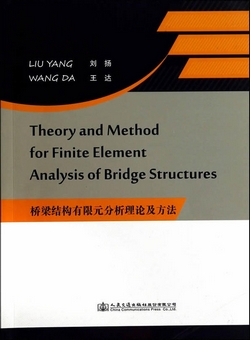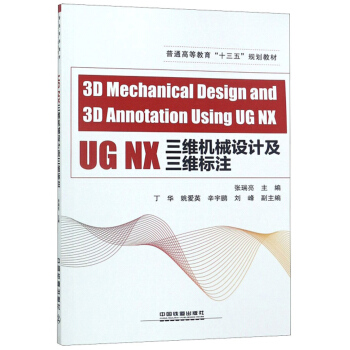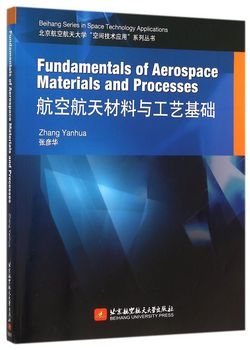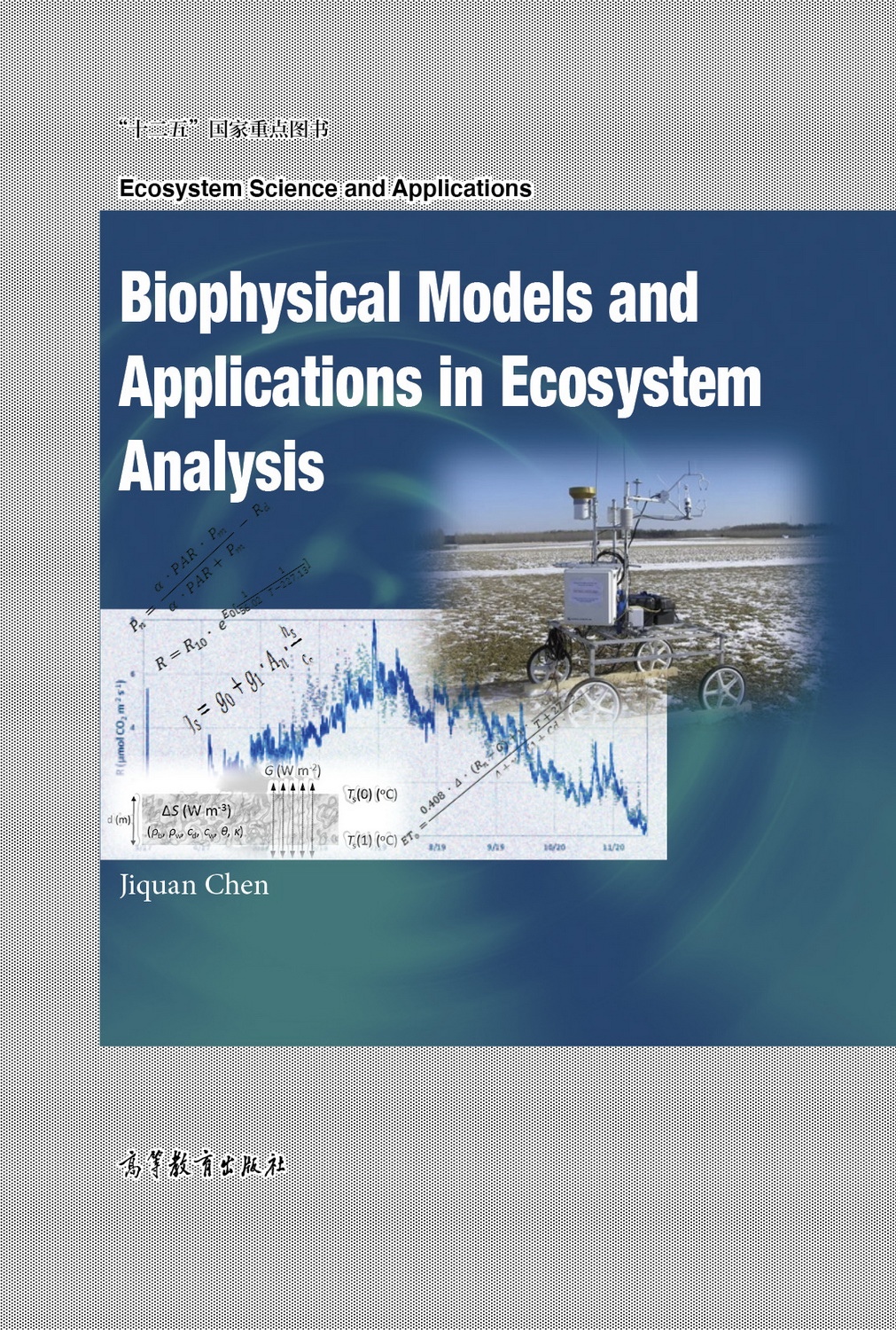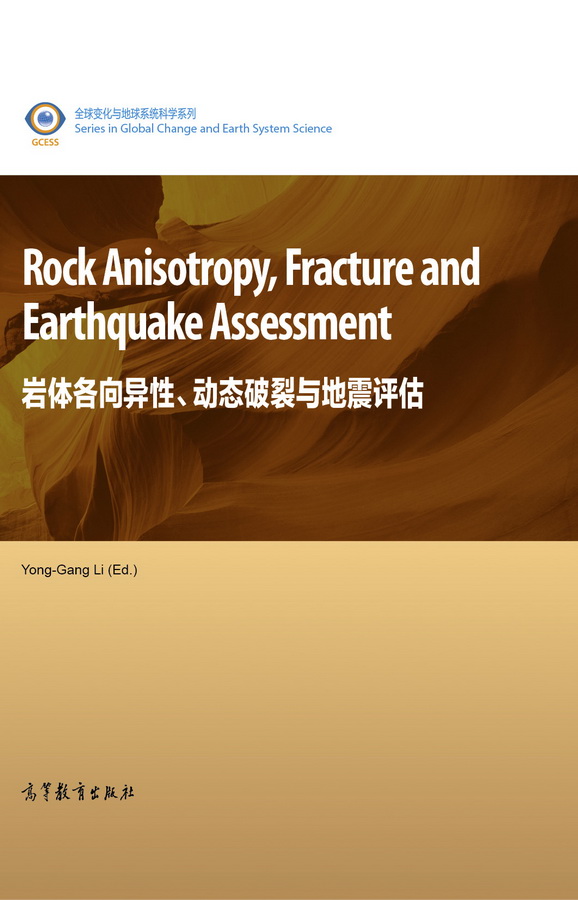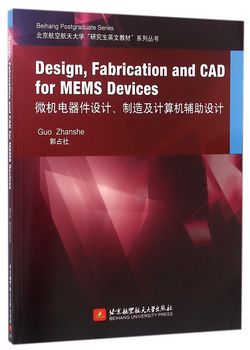桥梁结构有限元分析理论及方法 / 高等学校交通运输与工程类专业规划教材
定价:¥28.00
作者: 刘扬
出版时间:2014-08
出版社:人民交通出版社
- 人民交通出版社
- 9787114116018
- 152583
- 47155795-9
- 平装
- 16开
- 2014-08
- 214
- 180
- U443
- 路桥
- 本科
内容简介
This book makes a detailed narration about theories and methods of bar structure, beam structure,shell structure and 3D structure beyond the limit of former similar books. Besides, it also makes a brief introduction of major methods for bridge structure stability analysis and dynamic analysis and lists a range of software for finite element and its engineering examples. In this way, reader can get to know finite element method from the angle of fundamental and problems and then combine theories and methods with engineering examples to solve practical problems.
This book is a textbook mainly for overseas students, domestic undergraduates and graduates majoring in engineering type, and can also be considered as a reference book for engineering technicians.
《桥梁结构有限元分析理论及方法》是全英文版本,由刘扬、王达编著。
This book is a textbook mainly for overseas students, domestic undergraduates and graduates majoring in engineering type, and can also be considered as a reference book for engineering technicians.
《桥梁结构有限元分析理论及方法》是全英文版本,由刘扬、王达编著。
目录
Chapter 1 Introduction
1.1 Overview
1.2 History of FEM
1.3 Engineering Application of FE Method
1.3. l Linear Elastic FE
1.3.2 Non-linear Elastic FE
1.3.3 Analysis Procedure of FE Method
1.3.4 Engineering Applications of FEM
Chapter 2 FE Analysis for Structural System Composed of Bar
2.1 Local FE Analysis
2.1.1 Tension/Strut Bar Elements
2.1.2 Torsional Bar Elements
2.1.3 General Plane Bar Member Element
2.1.4 Space Bar Member Element
2.1.5 Natures of Space Stiffness Matrix
2.2 Integral Analysis for Structural System Composed of Bar
2.2.1 Matrix for Plane Coordinates Transformation
2.2.2 Matrix for Space Coordinates Transformation
2.2.3 Integral Analysis of Structural System Composed of Bar
2.3 Load Equivalence
2.3.1 Processing Non-joint Load
2.3.2 Processing Boundary Conditions
Chapter 3 FE Analysis for Beam Structures
3.1 Local Element Analysis
3.1.1 Analysis of Plane Beam Element
3.1.2 Analysis of Space Beam Element
3.2 Structure Analysis
3.3 Load Equivalence
Chapter 4 FE Analysis of Plate Shell Structure
4.1 Elastic Sheet Theory
4.1.1 Basic Assumption
4.1.2 Geometric Equation
4.1.3 Physical Equation
4.2 Triangular Element Displacement Method
4.2.1 Displacement Mode
4.2.2 Element Analysis
4.3 Rectangular Element Displacement Method
4.3.1 Joint Displacement and Joint Force
4.3.2 Displacement Mode
4.3.3 Stress Analysis
4.3.4 Element Stiffness Matrix
4.3.5 Calculation of Equivalent Joint Loads
4.4 Hybrid Method for Triangular Elements
4.4.1 Basic Unknown Quantities
4.4.2 Displacement Mode
4.4.3 Internal Force Mode
4.4.4 Deduction of Sub-matrix KVW
4.4.5 Deduction of Sub-matrix KVM
4.4.6 Deduction of Sub-matrix KOW
4.4.7 Equivalent Joint Load
4.5 Rectangular Element Hybrid Method
4.5.1 Basic Unknown Quantity
4.5.2 Displacement Mode and Internal Force Mode
4.5.3 Element Matrix
4.5.4 Equivalent Joint Loads
4.6 Edge-curved Flat-plate Bending Element with Consideration of
Transverse Shear Influence
Chapter 5 3D Structure FE Analysis
5.1 Space Axially Symmetrical Problems
5.2 Tetrahedron Element
5.2.1 Volume Coordinates
5.2.2 Second-order Tetrahedron Element
5.2.3 Third-order Tetrahedron Element
5.2.4 48 - Degree-of-Freedom Tetrahedron Element
5.3 Hexahedron Element
5.3.1 8-Joint Hexahedron Element
5.3.2 20-Joint Hexahedron Element
5.3.3 32-Joint Hexahedron Element
Chapter 6 Structural Stability Analysis
6.1 Overview
6.1.1 Classification of Stability Problems
6.1.2 Criteria for Stability of Equilibrium
6.2 Stability Analysis to Structural System Composed of Bar
6.2.1 Bending Stability of Centric Strut Bar Member
6.2.2 Bending Stability of Compression Bending Bar Members
6.2.3 Integral Stability Analysis of Structural System Composed of Bar
6.3 Stability Analysis to Plate Structure
6.3.1 Elastic Warpage of Plate
6.3.2 Elasto-plastic Warpage of Plate
6.3.3 FEM of Plate Warpage Analysis
Chapter 7 Structural Dynamic Analysis
7.1 Natural Vibration Characteristic Analysis
7.2 Seismic Reaction Analysis
7.2.1 Reaction Spectrum Analysis
7.2.2 Time History Analysis
Chapter 8 Introduction to FE Computation Software
8.1 Dr. Bridge FE Computation Program
8.1.1 Introduction
8.1.2 Engineering Examples
8.2 GQJS FE Computation Program
8.2.1 Introduction
8.2.2 Engineering Examples
8.3 MIDAS FE Computation Program
8.3.1 Introduction
8.3.2 Engineering Examples
8.4 Ansys FE Computation Program
8.4.1 Introduction
8.4.2 Engineering Examples
8.5 Introduction to SAP2000 FE Computation Program
8.6 Introduction to TDV FE Computation Program
References
1.1 Overview
1.2 History of FEM
1.3 Engineering Application of FE Method
1.3. l Linear Elastic FE
1.3.2 Non-linear Elastic FE
1.3.3 Analysis Procedure of FE Method
1.3.4 Engineering Applications of FEM
Chapter 2 FE Analysis for Structural System Composed of Bar
2.1 Local FE Analysis
2.1.1 Tension/Strut Bar Elements
2.1.2 Torsional Bar Elements
2.1.3 General Plane Bar Member Element
2.1.4 Space Bar Member Element
2.1.5 Natures of Space Stiffness Matrix
2.2 Integral Analysis for Structural System Composed of Bar
2.2.1 Matrix for Plane Coordinates Transformation
2.2.2 Matrix for Space Coordinates Transformation
2.2.3 Integral Analysis of Structural System Composed of Bar
2.3 Load Equivalence
2.3.1 Processing Non-joint Load
2.3.2 Processing Boundary Conditions
Chapter 3 FE Analysis for Beam Structures
3.1 Local Element Analysis
3.1.1 Analysis of Plane Beam Element
3.1.2 Analysis of Space Beam Element
3.2 Structure Analysis
3.3 Load Equivalence
Chapter 4 FE Analysis of Plate Shell Structure
4.1 Elastic Sheet Theory
4.1.1 Basic Assumption
4.1.2 Geometric Equation
4.1.3 Physical Equation
4.2 Triangular Element Displacement Method
4.2.1 Displacement Mode
4.2.2 Element Analysis
4.3 Rectangular Element Displacement Method
4.3.1 Joint Displacement and Joint Force
4.3.2 Displacement Mode
4.3.3 Stress Analysis
4.3.4 Element Stiffness Matrix
4.3.5 Calculation of Equivalent Joint Loads
4.4 Hybrid Method for Triangular Elements
4.4.1 Basic Unknown Quantities
4.4.2 Displacement Mode
4.4.3 Internal Force Mode
4.4.4 Deduction of Sub-matrix KVW
4.4.5 Deduction of Sub-matrix KVM
4.4.6 Deduction of Sub-matrix KOW
4.4.7 Equivalent Joint Load
4.5 Rectangular Element Hybrid Method
4.5.1 Basic Unknown Quantity
4.5.2 Displacement Mode and Internal Force Mode
4.5.3 Element Matrix
4.5.4 Equivalent Joint Loads
4.6 Edge-curved Flat-plate Bending Element with Consideration of
Transverse Shear Influence
Chapter 5 3D Structure FE Analysis
5.1 Space Axially Symmetrical Problems
5.2 Tetrahedron Element
5.2.1 Volume Coordinates
5.2.2 Second-order Tetrahedron Element
5.2.3 Third-order Tetrahedron Element
5.2.4 48 - Degree-of-Freedom Tetrahedron Element
5.3 Hexahedron Element
5.3.1 8-Joint Hexahedron Element
5.3.2 20-Joint Hexahedron Element
5.3.3 32-Joint Hexahedron Element
Chapter 6 Structural Stability Analysis
6.1 Overview
6.1.1 Classification of Stability Problems
6.1.2 Criteria for Stability of Equilibrium
6.2 Stability Analysis to Structural System Composed of Bar
6.2.1 Bending Stability of Centric Strut Bar Member
6.2.2 Bending Stability of Compression Bending Bar Members
6.2.3 Integral Stability Analysis of Structural System Composed of Bar
6.3 Stability Analysis to Plate Structure
6.3.1 Elastic Warpage of Plate
6.3.2 Elasto-plastic Warpage of Plate
6.3.3 FEM of Plate Warpage Analysis
Chapter 7 Structural Dynamic Analysis
7.1 Natural Vibration Characteristic Analysis
7.2 Seismic Reaction Analysis
7.2.1 Reaction Spectrum Analysis
7.2.2 Time History Analysis
Chapter 8 Introduction to FE Computation Software
8.1 Dr. Bridge FE Computation Program
8.1.1 Introduction
8.1.2 Engineering Examples
8.2 GQJS FE Computation Program
8.2.1 Introduction
8.2.2 Engineering Examples
8.3 MIDAS FE Computation Program
8.3.1 Introduction
8.3.2 Engineering Examples
8.4 Ansys FE Computation Program
8.4.1 Introduction
8.4.2 Engineering Examples
8.5 Introduction to SAP2000 FE Computation Program
8.6 Introduction to TDV FE Computation Program
References

